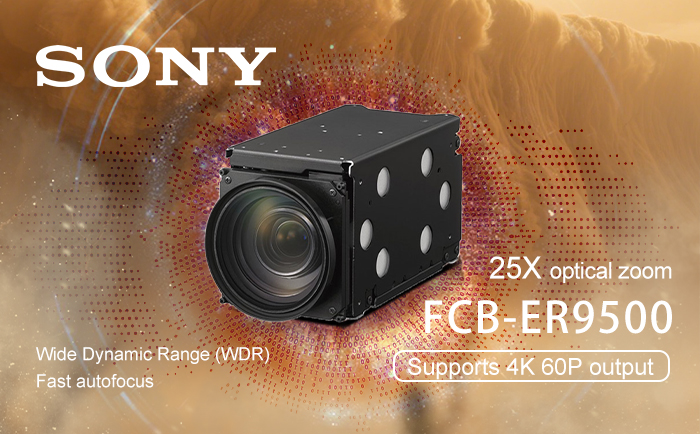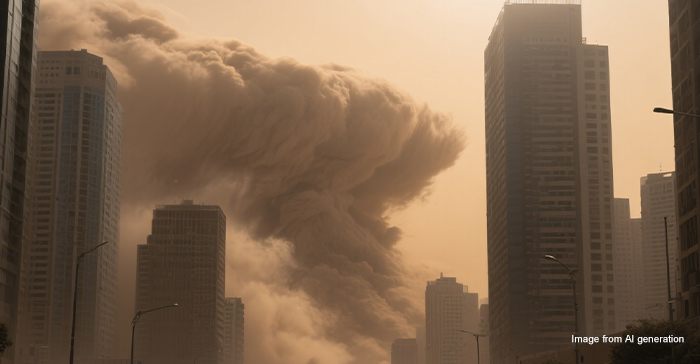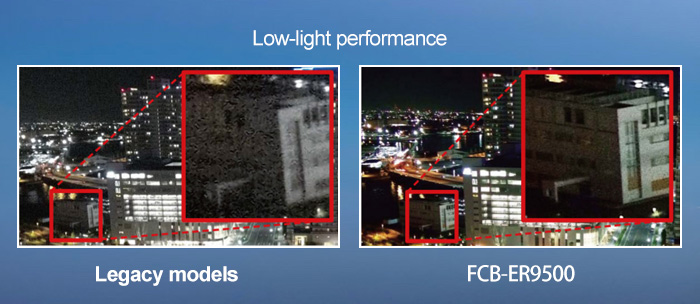In an extremely harsh sandstorm environment, capturing clear and stable images is almost an impossible task. But how does the Sony FCB-ER9500 4K ultra-high-definition camera module cope with it? With its outstanding performance and advanced technology, the FCB-ER9500 has become a powerful “developing” tool for capturing high-definition images in complex environments such as sandstorms

I. The Core challenge of Sandstorm Imaging: The “Chaotic Barrier” of Optics
The sand and dust environment poses a triple threat to the imaging system:
Particle scattering interference: Suspended sand particles cause Mie scattering of light, resulting in blurred images and a sudden drop in contrast.
Dynamic range collapse: The interweaving of sand and dust with strong light creates an extremely high contrast, resulting in large-scale overexposure or dead black in traditional equipment.
Detail annihilation: Sand grains cover the surface texture of the target, and the identification of minor damages is completely ineffective.
Industry pain point record: During a sandstorm inspection at a certain wind farm, the missed detection rate of blade cracks in ordinary cameras reached 72%, directly leading to blade fracture accidents.

Ii. The Breaking Technology Chain of FCB-ER9500: The “Optical Sharp Blade” Piercing Through Chaos
1. Optical system: The physical foundation for the penetration of sand and dust
7-blade aperture design: Optimize the light entry path, effectively reduce the halo distortion reflected by sand and dust, and maintain the geometric authenticity of the image.
25x optical zoom (6.5-162.5mm) : Even when visibility is less than 50 meters, it can still lock the rust of the fan bolts from 50 meters away.
STARVIS 2 CMOS sensor (1/1.8 inch) : The single-pixel photosensitive area is increased by 40%, and the effective photon capture under sand and dust occlusion is doubled.
2. Fog-penetrating Algorithm: The “decoder” of Chaotic Scenes
Three-level fog-penetrating mode: Dynamically enhance the contour based on the atmospheric scattering model, maintaining a relatively high target recognition rate during sandstorms.
WDR: Simultaneously suppresses sand and dust reflection overexposure and shadow dead black, and can output clear and uniformly colored images even when capturing targets with backlighting or a wide brightness range containing extremely bright areas.
3. Anti-shake and shock resistance: The “Suppressor” of Dynamic chaos
Super+ Anti-shake Mode: In the turbulence caused by sandstorms, the image offset can be effectively controlled.
Three-axis gyroscope compensation: Horizontal, vertical and rotational three-axis jitter correction, effectively reducing the sag measurement error of transmission lines in sandstorms.
4. Adaptability to complex environments
Wide dynamic range: The FCB-ER9500 features a wide dynamic range, enabling it to perform exceptionally well in high-contrast scenes. During sandstorms, the light changes sharply. This module can effectively process images and ensure that the details of both the dark and bright areas are retained.
Low-light performance: In the high-sensitivity mode, the minimum light in the ICR mode can reach 0.028 lx (shutter speed 1/30 s), and in the ICR enabled mode, the minimum light can be as low as 0.00016 lx (shutter speed 1/30 s). This excellent low-light performance ensures that clear images can be obtained even in situations where sandstorms block sunlight and the environment is dim.
Infrared night vision function: It supports infrared night vision function, which can restore true color image output in low-light environments, expanding the application range of the camera and is suitable for sandstorm monitoring scenarios at night or in low-light conditions.

5. Intelligent functions and algorithms
Regional independent 3A function: Built-in regional independent 3A function (auto focus, auto exposure, auto white balance), allowing users to precisely control specific areas within the frame, enhancing the intelligence and quality of the image. In sandstorm monitoring, optimization Settings can be made for specific areas such as sand and dust concentration and movement trajectories.
Noise reduction technology: By adopting advanced noise reduction algorithms, it can analyze and remove noise in the image in real time during the shooting process, maintaining the clarity and fineness of the picture.
Iii. Practical Application Cases
Sandstorm monitoring: In sandstorm monitoring, the Sony FCB-ER9500 can clearly capture the movement trajectory of sand grains, providing important data support for meteorological research and disaster prevention and mitigation.
Environmental monitoring: In the field of environmental monitoring, the high-definition picture quality and complex environmental adaptability of Sony FCB-ER9500 make it a powerful tool for monitoring issues such as air quality and sand and dust pollution.
 Sony FCB camera block
Sony FCB camera block